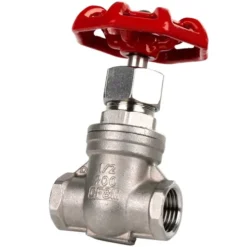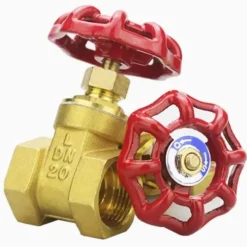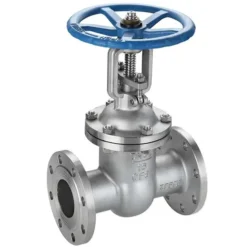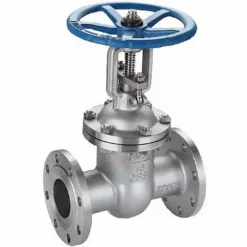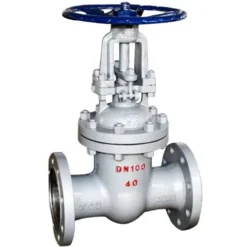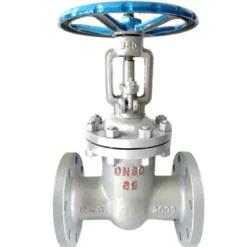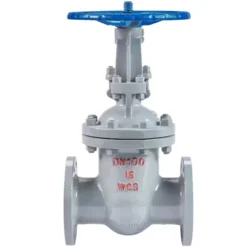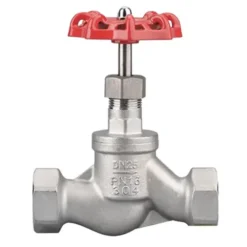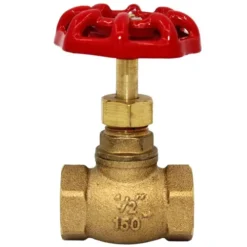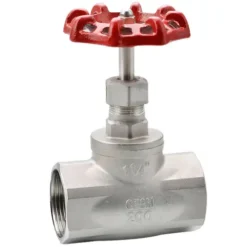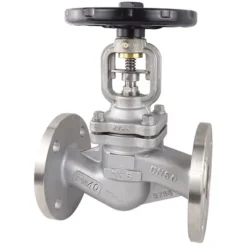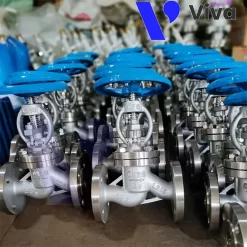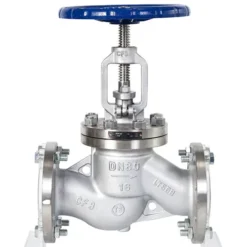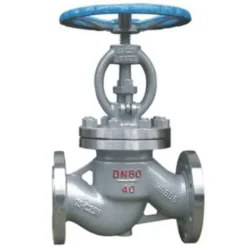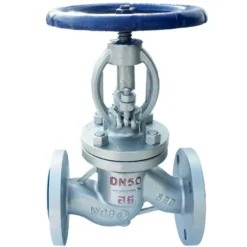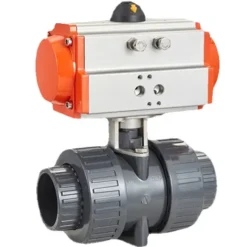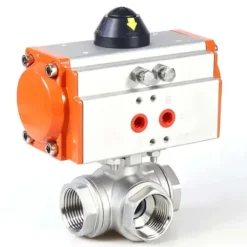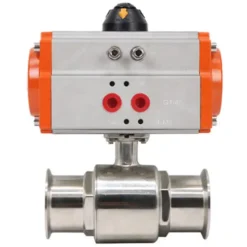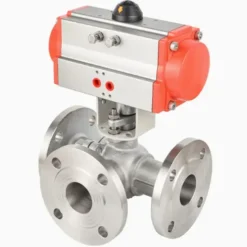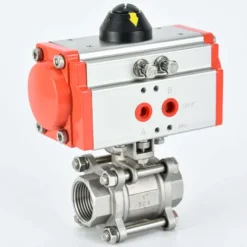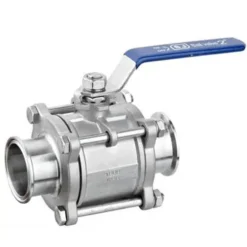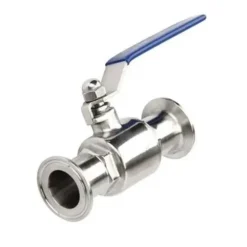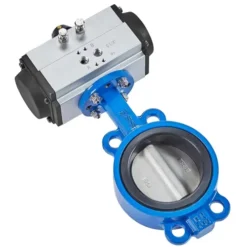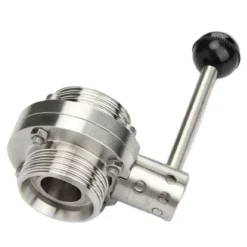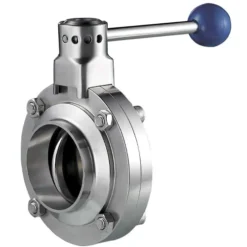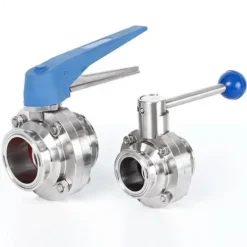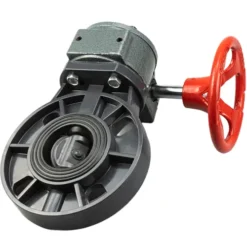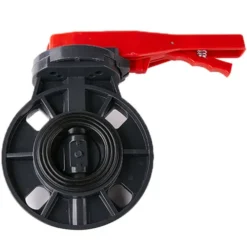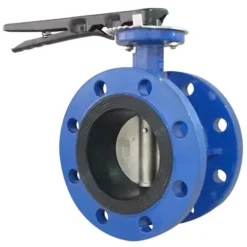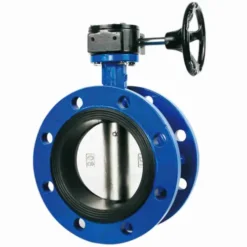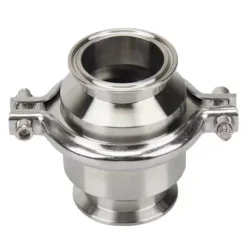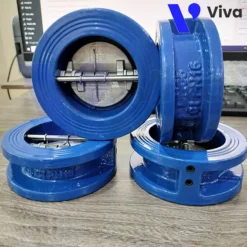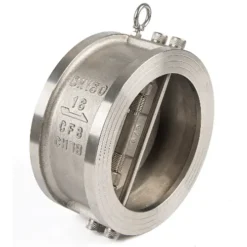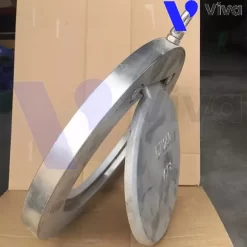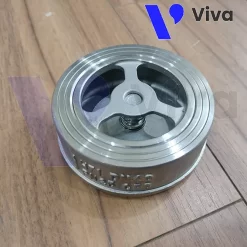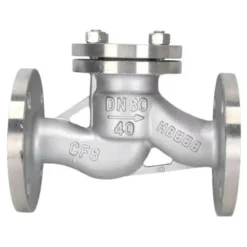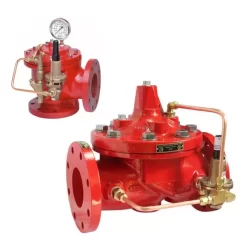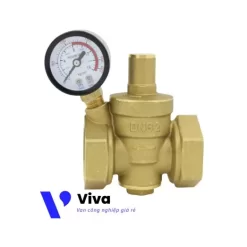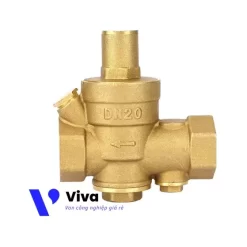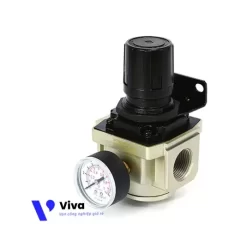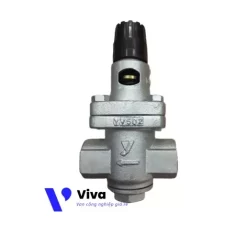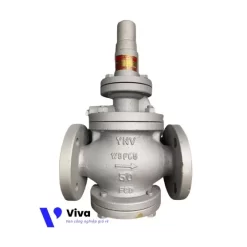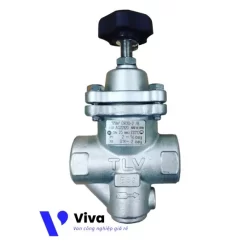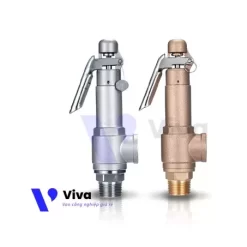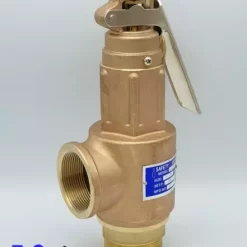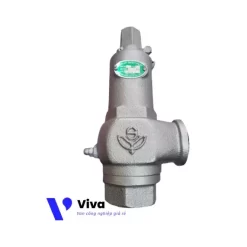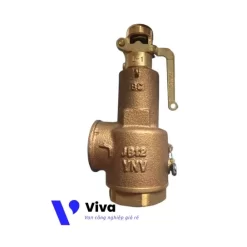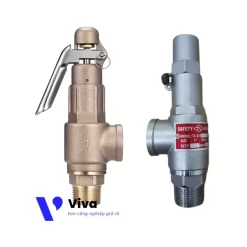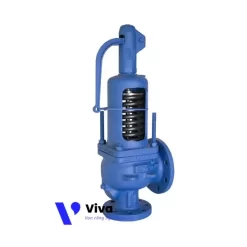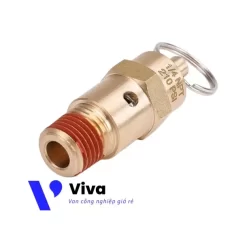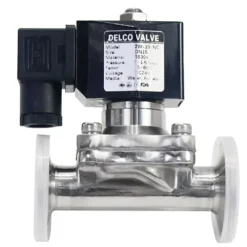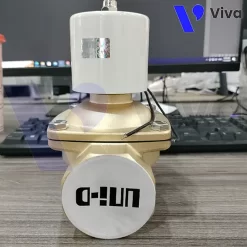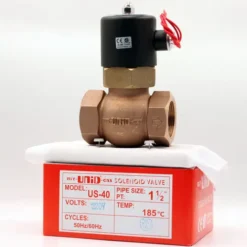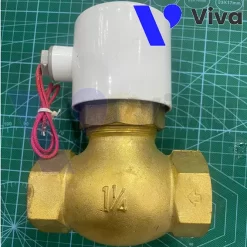What is a valve – types of industrial valves
What is an Industrial Valve?
An industrial valve is a mechanical device that controls the flow of liquids, gases, and slurry in a piping system or process. It is designed to open, close, or partially obstruct a section of the pipeline to regulate the flow of fluids or gases, allowing them to be directed to different parts of the system.

Industrial valves can be operated manually, through motor or electric actuators, or automatically through computer-controlled systems. They are used in various industrial applications such as oil and gas, chemical processing, power generation, water treatment, and pharmaceuticals.
There are several types of industrial valves, including gate valves, globe valves, ball valves, butterfly valves, and check valves. Each type has its own unique design and application, and they are chosen based on the specific needs of the process or system.
Development History
The history of industrial valves dates back to ancient times when humans first discovered the need to control the flow of water for irrigation and other purposes. The earliest known valves were simple gate valves or plugs made of wood or stone, used to regulate the flow of water through channels and conduits.
Over time, as technology advanced and the demand for more complex valves increased, new materials and designs were developed. In the 19th century, the industrial revolution led to an increased demand for valves, particularly in the steam power industry. During this period, valves began to be made from metals such as brass and cast iron, and new designs such as globe valves and check valves were developed.

In the 20th century, the development of new materials such as stainless steel and plastics, along with advancements in manufacturing processes, led to further innovation in valve design. New types of valves, such as ball valves and butterfly valves, were introduced, improving performance and reliability.
Today, valves are essential components in many industries, including oil and gas, chemical processing, water treatment, and power generation. They are available in various sizes, materials, and designs to suit different applications, from simple plug valves to complex control valves with electronic and pneumatic actuators.
As industries continue to evolve and new technologies emerge, the demand for innovative valve solutions may increase, driving further advancements in valve design and manufacturing.
General Construction
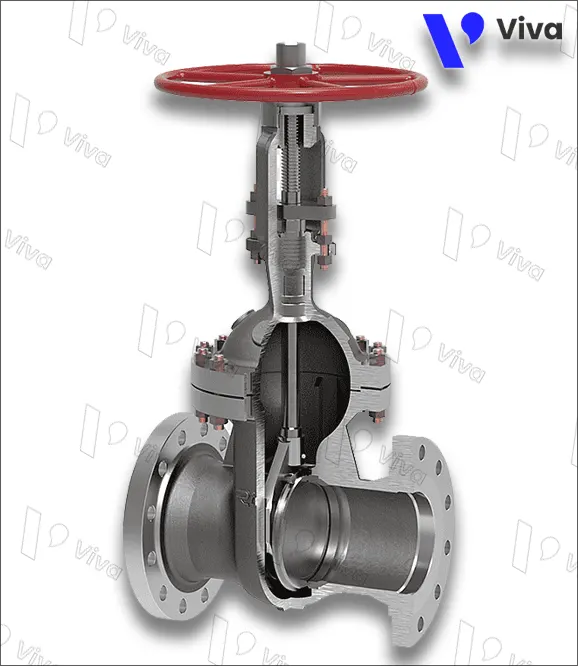
Industrial valves have a basic structure consisting of the following seven components:
- Valve body: The valve body is the outer casing that contains the internal components. It is usually made of metal or plastic and designed to withstand high pressure and temperature.
- Bonnet: It is the part attached to the valve body and helps access the internal components. It is usually bolted or threaded onto the valve body and may have a sealing gasket to prevent leakage.
- Stem: The stem is the component that connects the valve handle or actuator to the internal parts. It is typically a rod or shaft running through the bonnet and into the valve body.
- Disc or ball: It is the component that controls the flow of liquid or gas through the valve. It is usually circular or tapered in shape and attached to the body or actuator.
- Seat: It is the surface against which the disc or ball rests when the valve is closed. It is typically made of resilient material such as rubber or plastic and has the ability to provide a tight seal to prevent leakage.
- Actuator: The actuator is the mechanism for opening and closing the valve. It can be manual, such as a handle or lever, or automatic, such as an electric, hydraulic, or pneumatic actuator.
- Gasket: It is a sealing gasket used to prevent leakage around the body or bonnet. It is usually made of compressible material such as graphite or Teflon and is placed around the body or bonnet and compressed against the valve seat to create a tight sealing ring.
The precise structure of industrial valves may vary depending on the type and application of the valve, but these basic components are present in most designs.
Principle of Operation

Industrial valves operate on different principles depending on their type and application. However, generally, the principle of operation of an industrial valve includes the following steps:
- Valve opening or closing: The first step is to open or close the valve, depending on the desired flow rate or flow direction. This is achieved by rotating the valve handle or activating the actuator, which is connected to the position control of the disc or ball inside the valve.
- Flow control: When the valve is open, the flow of liquid or gas can be controlled by adjusting the position of the disc or ball inside the valve. This can be done manually by rotating the valve handle or automatically by adjusting the actuator.
- Sealing: When the valve is closed, a sealing barrier is created between the disc or ball and the seat, preventing the flow of liquid or gas through the valve. This is necessary to prevent leakage and maintain the integrity of the industrial process.
- Pressure and temperature handling: Industrial valves are designed to withstand high pressure and temperature, ensuring their safe use in industrial processes.
The precise working principle of an industrial valve will depend on its type, such as gate valve, ball valve, globe valve, check valve, diaphragm valve, pressure relief valve, or safety valve. However, generally, industrial valves operate
Application
Industrial valves have many applications in different industries, including:

Oil and Gas
Valves are used to control the flow of crude oil, natural gas, and other liquids in pipelines, oil refineries, and drilling operations.

Chemical treatment
Valves are used in chemical processing plants to control the flow of chemicals and other substances, regulate pressure and temperature, and prevent leaks.

Water treatment
Valves are used to control the flow of water in treatment plants, regulate pressure and temperature, and prevent contamination.

Electric Factory
Valves are used in power plants to control the flow of steam and other fluids in boilers, turbines and other equipment.

HVAC
Valves are used in heating, ventilation and air conditioning systems to control air and water flow, regulate temperature, and control humidity.

Exploit
Valves are used in mining operations to control the flow of water, sludge and other liquids, regulate pressure and temperature, and prevent leaks.

Food & Beverage
Valves are used in food and beverage processing plants to control the flow of liquids and gases, regulate pressure and temperature, and prevent contamination.

Medicine
Valves are used in pharmaceutical manufacturing to control the flow of liquids and gases, regulate pressure and temperature, and prevent contamination.
The above are just a few examples of the many applications of industrial valves. Valves are essential components in many different industries and play an important role in ensuring the safe and efficient operation of industrial processes.
Common Types of Industrial Valves
Common types of industrial valves:
- Gate valve
- Globe valve
- Ball valve
- Butterfly valve
- Check valve
- Diaphragm valve
- Pressure reducing valve
- Safety valve
- Needle valve
- Solenoid valve
- Float valve
Let’s explore each type of valve in more detail.
Gate Valve
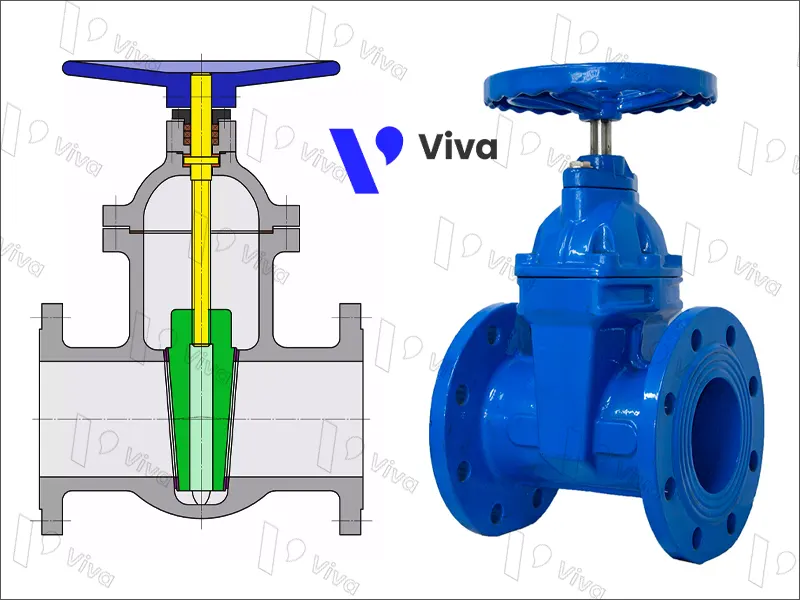
Gate valve is a type of valve used to control the flow of fluid through pipes or conduits. It is commonly used to completely shut off the flow of fluid or to regulate the flow rate.
A gate valve has a gate or disc that is moved up or down by a threaded stem or a handwheel to control the flow of fluid. When the gate is fully lifted, fluid can flow through the valve without obstruction. When the gate is fully lowered, the flow of fluid is stopped.
Gate valves are often used in applications that require tight sealing, such as in the oil and gas industry, water treatment plants, and power generation facilities. They are also commonly used in industrial processes where flow control of raw materials is necessary.
Globe Valve
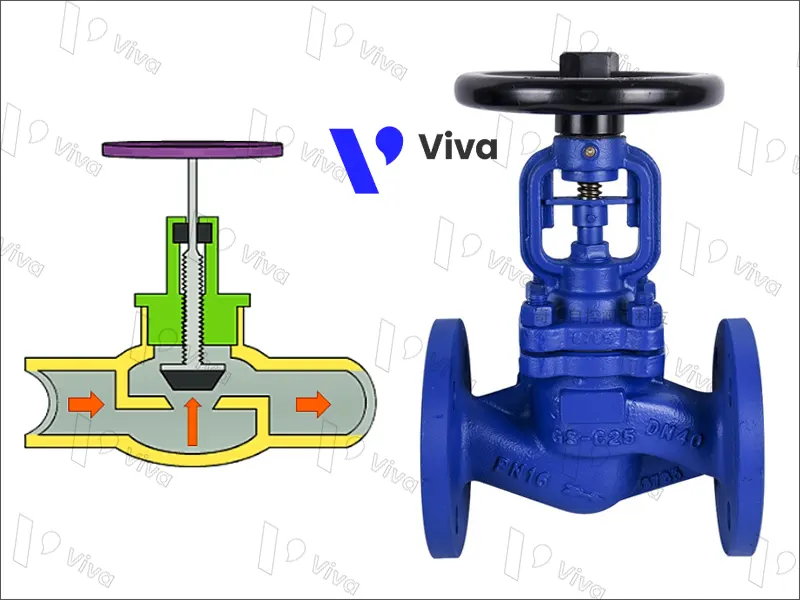
Globe Valve is a type of valve used to regulate the flow of fluid through pipelines. It is similar to a gate valve in that it uses a disc to control the flow of liquid, but the disc in a globe valve is spherical and positioned perpendicular to the fluid flow.
The disc is connected to a body that can be moved up or down by a handwheel or an actuator to control the flow of fluid. As the disc moves closer to the valve seat, the fluid flow gradually decreases. This makes the globe valve particularly useful in applications that require precise flow control.
Globe valves are commonly used in industries such as water treatment, power generation, oil and gas, as well as in applications that require flow control, such as steam systems, refrigeration systems, and hydraulic systems. They are often preferred over gate valves because of their ability to accurately control flow and provide better sealing.
Ball Valve
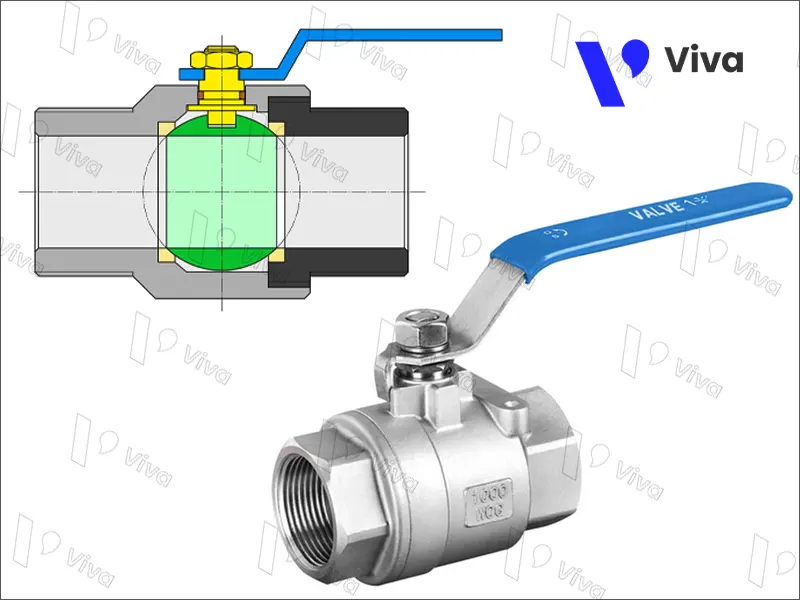
Ball Valve is a type of valve used to control the flow of fluid through pipes. It is named after the hollow ball-shaped disc inside the valve that rotates to open or close the flow of fluid.
A ball valve has a hollow spherical disc with a hole or bore drilled through its center. When the bore aligns with the inlet and outlet ports of the valve, fluid can flow through the valve. When the ball is rotated 90 degrees, the bore is perpendicular to the ports, and the flow of fluid stops.
Ball valves are used in various industries such as oil and gas, water treatment, and chemical processing due to their durability and ease of use. They can be operated quickly and easily, while providing tight sealing even in high-pressure and high-temperature applications.
Ball valves come in different sizes and materials to suit various applications and can be operated manually, electrically, or pneumatically.
Butterfly Valve (Van bướm)

Butterfly valve is a type of valve used to regulate or block the flow of fluid through a pipeline. It is named after the butterfly-shaped disc inside the valve that rotates to open or close the flow of the liquid.
A butterfly valve has a disc attached to a rotating shaft. When the disc is parallel to the direction of the fluid flow, it allows the fluid to pass through with minimal obstruction. When the disc rotates at a 90-degree angle, perpendicular to the flow of the fluid, the flow stops.
Butterfly valves are commonly used in applications that require quick operation and low-pressure drop, such as in the food and beverage industry, water treatment plants, and HVAC systems. They often have lower cost and require less space compared to other types of valves, making them a popular choice in many industries.
Butterfly valves can be operated manually, electrically, or pneumatically, and they come in various sizes and materials to suit different applications.
Check Valve (Van một chiều)

Check valve is a type of valve that allows fluid to flow in only one direction through a pipeline. It is designed to prevent backflow, which can cause damage to equipment or contaminate the fluid.
The valve has a disc or ball that is moved by the flow of the fluid. When the fluid flows in the desired direction, the disc or ball is pushed to one side, allowing the fluid to pass through the valve. When the fluid tries to flow in the opposite direction, the disc or ball is pushed back to the valve seat, blocking the flow of the fluid.
Check valves are commonly used in industries such as water treatment, oil and gas, and chemical processing. They are often installed in fluid or gas pipelines to prevent backflow that could damage pumps, compressors, or other equipment.
Check valves have different designs, such as swing check, lift check, or ball check valves, to suit different applications. They can be operated automatically or manually and come in various sizes and materials to accommodate different types of fluids and environments.
Diaphragm Valve
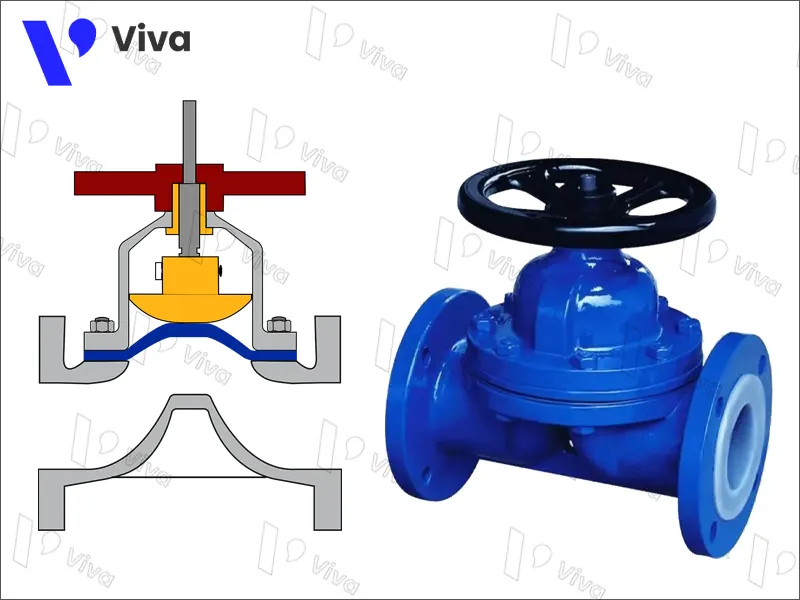
A diaphragm valve is a type of valve used to control the flow of fluids through pipes. It utilizes a flexible barrier, usually made of rubber or other materials, called a diaphragm, to regulate the fluid flow.
The diaphragm is connected to a body or actuator, which, when moved, deforms the diaphragm and changes the position of a closing element, such as a disc or ball, to adjust the fluid flow. When the diaphragm is pressed against the closing element, the fluid flow is halted, and when the diaphragm is released, the fluid flow is allowed.
Diaphragm valves are commonly used in industries such as pharmaceuticals, biotechnology, food and beverage, where fluid contamination needs to be avoided. They are also employed in applications where precise control of fluid flow is required, such as in chemical processing and water treatment.
Diaphragm valves are available in different designs, such as weir, straight, or angle, to suit various applications. They can be operated manually or automatically, and come in various sizes and materials to accommodate different types of fluids and environments.
Pressure Reducing Valve

Pressure Reducing Valve is a type of valve used to regulate the pressure of a fluid within a piping system. It operates by reducing the pressure of the fluid before it flows into the equipment or downstream system.
The pressure reducing valve has an adjustable spring-loaded diaphragm to control the flow rate of the fluid through the valve. When the pressure of the fluid at the upstream side of the valve exceeds the set pressure, the valve opens and allows the fluid to flow through, reducing the pressure at the downstream side of the valve.
Pressure reducing valves are commonly used in industries such as oil and gas, water treatment, and HVAC systems to protect downstream equipment from damage due to high pressure. They can also be used to improve efficiency by reducing the pressure of the fluid in systems that do not require high pressure.
Pressure reducing valves are available in different designs, such as direct-acting, pilot-controlled, or self-operated, to suit various applications. They can be operated manually or automatically, and come in various sizes and materials to accommodate different types of fluids and environments.
Diaphragm Valve (Van màng)

A diaphragm valve is a type of valve used to control the flow of liquid through a pipeline. It utilizes a flexible diaphragm made of rubber or other materials to regulate the flow of the liquid.
The diaphragm is connected to a body or actuator, which, when moved, deforms the diaphragm and changes the position of a closing element, such as a disc or ball, to adjust the flow of the liquid. When the diaphragm is pressed against the closing element, the flow of the liquid stops, and when the diaphragm is released, the flow of the liquid is allowed.
Diaphragm valves are commonly used in industries such as pharmaceuticals, biotechnology, food and beverage, where contamination of the liquid needs to be avoided. They are also used in applications where the flow of the liquid needs to be precisely controlled, such as in chemical processing and water treatment.
Diaphragm valves are available in different designs, such as weir, straightway, or angled, to suit various applications. They can be operated manually or automatically and come in various sizes and materials to accommodate different types of liquids and environments.
Pressure Reducing Valve (Van giảm áp)

Pressure Reducing Valve is a type of valve used to regulate the pressure of a fluid in a piping system. It operates by reducing the pressure of the liquid before it flows into the equipment or downstream system.
The pressure reducing valve has an adjustable spring-loaded diaphragm to control the flow of liquid through the valve. When the pressure of the liquid at the upstream of the valve exceeds the set pressure, the valve opens and allows the liquid to flow, reducing the pressure at the downstream of the valve.
Pressure reducing valves are commonly used in industries such as oil and gas, water treatment, and HVAC systems to protect downstream equipment from damage due to high pressure. They can also be used to enhance efficiency by reducing the pressure of the fluid in systems that do not require high pressure.
Pressure reducing valves are available in different designs, such as direct-acting, pilot-operated, or self-acting, to suit various applications. They can be operated manually or automatically and come in various sizes and materials to accommodate different types of liquids and environments.
Safety Valve (Van an toàn)
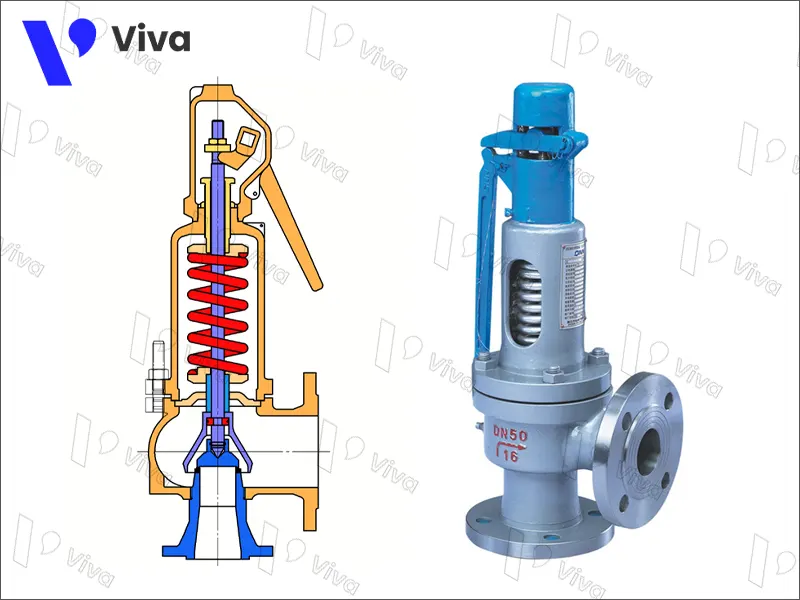
Safety Valve is a type of valve used to protect equipment or systems from excessive pressure by releasing excess pressure in a controlled manner. It is a safety device commonly used in industries such as oil and gas, chemical processing, and power generation.
The safety valve has a spring-loaded disc held in a closed position by the set pressure. When the pressure in the system exceeds the set pressure, the disc lifts and allows the fluid to escape, reducing the pressure in the system.
Safety valves are designed to prevent equipment or system damage due to excessive pressure, which can lead to explosions or other types of failures. They are often used in applications that require tight control of liquid or gas pressure, such as in boilers, pressure vessels, or pipelines.
Safety valves come in different designs, such as direct-acting, pilot-operated, or balanced bellows, to suit various applications. They can be operated manually or automatically and come in various sizes and materials to accommodate different types of liquids and environments. Safety valves are legally required in many industries to ensure the safety of workers and the community.
Needle Valve

The needle valve is a type of valve used to control the flow of fluid in a pipeline with high precision. It is named for its long, pointed stem resembling a needle, combined with a conical seat to regulate the flow of the fluid.
The needle valve is operated by either rotating a handle or a similar device that moves the needle up or down to control the size of the opening in the valve. The precise control capability provided by the needle valve allows for accurate adjustment of the fluid flow, making it ideal for applications where precision is crucial, such as in laboratories or precision machinery manufacturing.
Needle valves are commonly used in industries such as oil and gas, chemical processing, and pharmaceuticals, where precise control of fluid flow is highly important. They are also used in applications that require a small amount of fluid to be released in a controlled manner, such as in pilot systems or lubrication systems.
Needle valves come in various designs, such as globe, angle, or straight patterns, to suit different applications. They can be operated manually or automatically and are available in different sizes and materials to accommodate various types of fluids and environments.
Float Valve
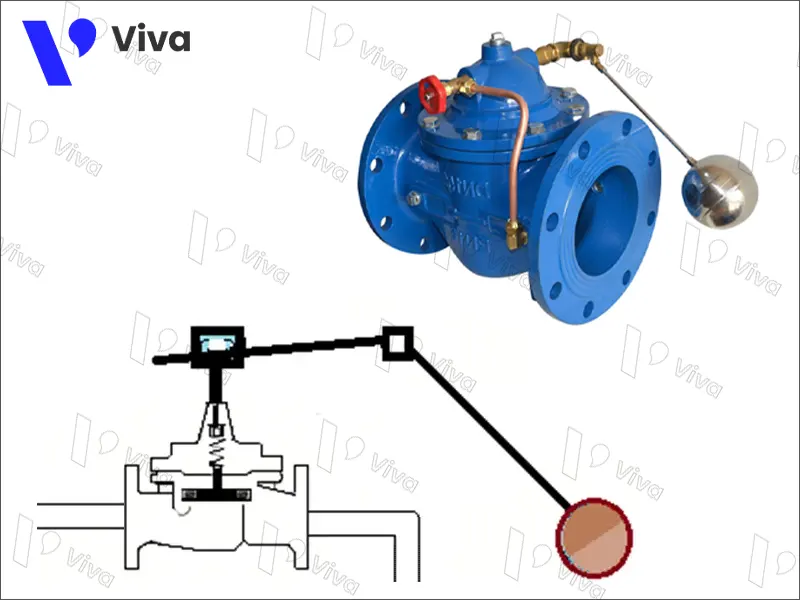
The float valve is a type of valve used to control the liquid level in a tank or reservoir. It operates by using a float, typically a hollow ball or cylinder, that rises and falls with the liquid level. The float is connected to an arm or other mechanism to open or close the valve as the liquid level changes.
As the liquid level rises, the float rises with it, causing the arm to move and open the valve. This allows the liquid to flow into the tank until the desired level is reached. As the liquid level decreases, the float drops with it, causing the valve to close and prevent additional liquid from entering the tank.
Float valves are commonly used in industries such as water treatment, agriculture, and HVAC systems to control the liquid level in tanks or reservoirs. They are also used in applications that require a constant liquid level, such as in cooling towers or humidifiers.
Float valves come in different designs, such as side-entry, bottom-entry, or pilot-operated, to suit different applications. They can be operated manually or automatically and are available in different sizes and materials to accommodate various types of fluids and environments.
Solenoid Valve

Solenoid Valve is a type of valve that uses an electric current to control the flow of liquid or gas through pipes. It is made up of a coil that generates a magnetic field when a current runs through it and a plunger or actuator connected to the valve body.
When a current is applied to the coil, the magnetic field pulls the plunger or actuator towards it, opening the valve and allowing the flow of liquid or gas through the pipes. When the current is turned off, the magnetic field disappears, and the plunger or actuator returns to its original position, closing the valve and stopping the flow of liquid or gas.
Electromagnetic valves are commonly used in various industries, including HVAC, water treatment, and industrial automation. They are popular because they can be operated remotely and integrated with control systems, making them suitable for applications that require high accuracy and fast response time.
There are different types of electromagnetic valves, such as direct-acting valves, control valves, or diaphragm valves, to suit different applications. They can be operated by different types of electrical signals, such as AC or DC voltage, and come in various sizes and materials to accommodate different types of fluids and environments.
Why Use Industrial Valves?

Industrial valves are used in various applications and industries because they provide essential functions in controlling the flow of liquids and gases. They are used to regulate pressure, flow rate, and direction of fluids, as well as to isolate and control the flow of materials in industrial processes. Here are some key reasons why industrial valves are important:
- Control: Industrial valves allow precise control of the flow of liquids and gases, enabling accurate adjustment of pressure, flow rate, and direction of materials.
- Safety: Industrial valves play a crucial role in ensuring safety in industrial processes by controlling the flow of hazardous materials and preventing leaks and spills.
- Efficiency: By controlling the flow of raw materials, industrial valves can optimize industrial processes and increase efficiency, helping to save costs and improve productivity.
- Durability: Industrial valves are designed to withstand high temperatures, pressures, and corrosive environments, making them a reliable and durable component in industrial processes.
- Flexibility: Industrial valves come in various types and configurations to meet the specific needs of different industries and applications.
In general, industrial valves
are an essential component in many industrial processes, allowing precise control of the flow of liquids and gases, ensuring safety, improving efficiency, and increasing productivity.
Considerations When Choosing Industrial Valves
Choosing the appropriate industrial valve for a specific application is crucial to ensure reliable and efficient operation of industrial processes. Below are some key considerations when selecting industrial valves:
It is essential to choose a valve made from materials that are compatible with the fluid or gas being transported. This is important to prevent corrosion, erosion, or chemical reactions that could affect the integrity of the valve and the industrial process.
Industrial valves must be designed to handle the pressure and temperature requirements of the specific application. Choosing a valve that is not designed to handle the pressure or temperature of the fluid or gas being transported can result in valve failure, leakage, or other safety hazards.
The flow rate and direction of the fluid or gas being transported will also impact valve selection. Some valves are designed for high flow rates, while others are more suitable for low flow rates. Similarly, some valves are designed to regulate flow in a specific direction, while others can control flow in both directions.
The type and function of the valve will also depend on the specific application. For example, a gate valve may be suitable for applications requiring on/off control, while a globe valve may be more suitable for applications requiring precise flow control. Understanding the application and selecting the appropriate type and function of the valve is crucial to ensure efficient and reliable operation.
Industrial valves require regular maintenance and repair to ensure optimal operation and longevity. When choosing industrial valves, it is important to consider the ease of maintenance and repair, as well as the availability of spare parts.
The cost of valves is also an important consideration. While you may want to choose a cheaper valve, it is important to consider the long-term costs for maintenance, repair, and valve replacement. Investing in a higher-quality valve may save costs in the long run.
In general, choosing the right industrial valves requires careful consideration of material compatibility, pressure and temperature requirements, flow rate and direction, valve type and function, maintenance and repair, as well as cost. By taking these factors into account, industrial processes can ensure their systems operate efficiently and reliably.

